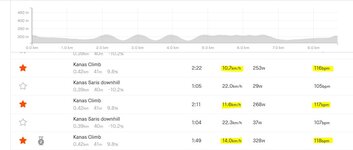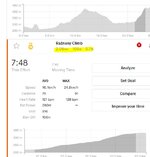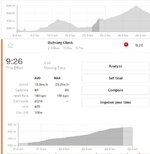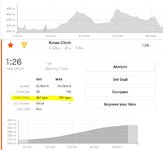I recently purchased a Bianchi Aria E road bike and have been challenged in locating the feature within the ebikemotion app that controls the percentage level of assist. Could you please list the step by step method in changing the factory default settings. Thanks.
Posting my questions regarding the Ebikemotion X35 and Specialized SL1.1 motors on the EBT Intros page didn't yield the specific answers I was seeking, but a read through several spring 2019 posts on this sub-forum helped considerably, so thanks to Ed B and fellow contributors for sharing their early experiences, especially as they concern climbing.
What I gathered is that the X35's assist responds primarily to cadence, with a sweet spot at around 70-80 rpm. That is my typical range in the flats and over shallower grades. Once I'm in the easiest gear my rpms tend to drop to roughly 60-70 on 8-10% slopes, 50-60 on 10-12%, and the 40s at (short runs of) 13-14%, my limit. Speed is not a concern.
If I understand correctly the motor will provide up to ~250w of assistance at 70-80 rpm and take me up some steeper grades at that rate (up to 10%?), but I'm not clear on what happens when the cadence drops on more challenging 10-15% slopes. A Granfondo review suggests that the X35 falters on steep grades, presumably due to slowing cadence. That's worrisome since it's on steep grades that help is needed the most. Hope some members have in-use experience they can share.
This would seem to be where the heart rate feature might help, by taking over control, relying on escalating heart rate thresholds to provide increasing levels of assist regardless of cadence. Does it actually work that way?
My other concern is noise. In a video review the SL1.1 comes across as objectionably noisy. How noisy is the X35? Ed B alludes to some intrusion in one of his posts without elaborating. Any added observations are welcom
Thanks. Rob Dv



